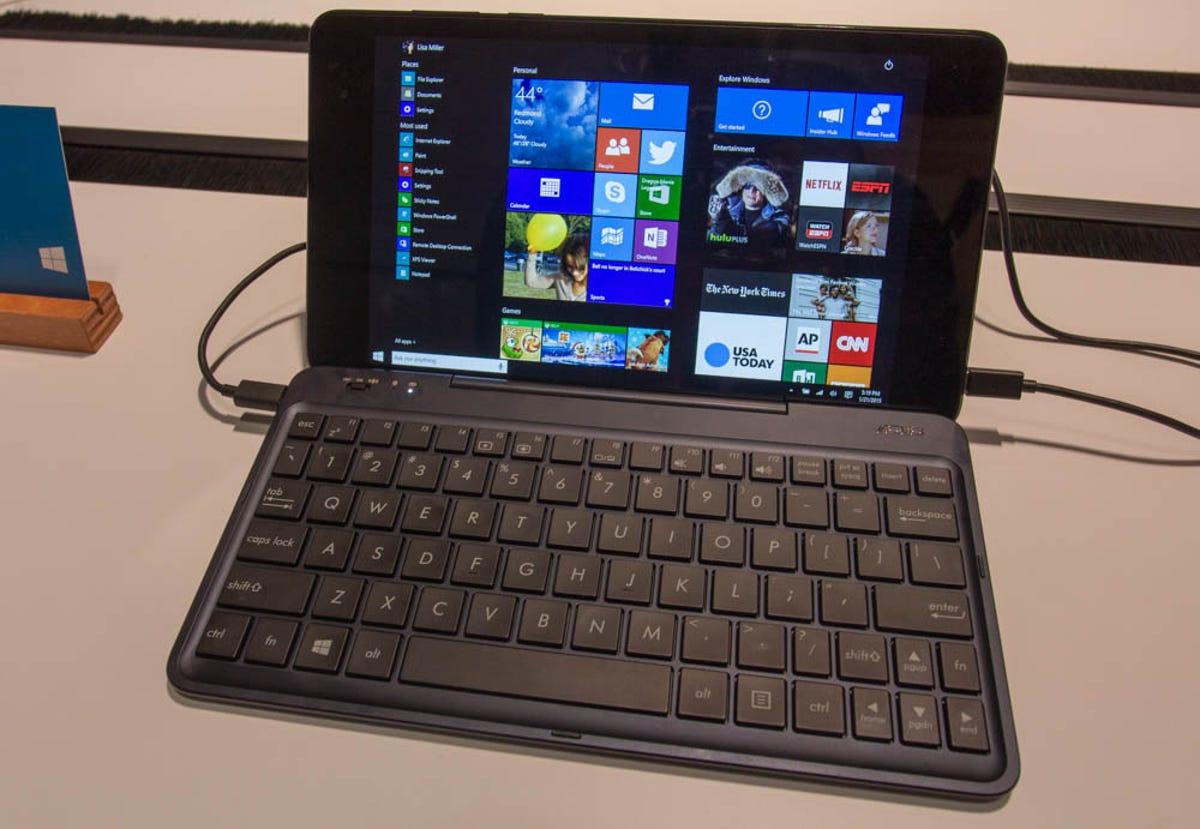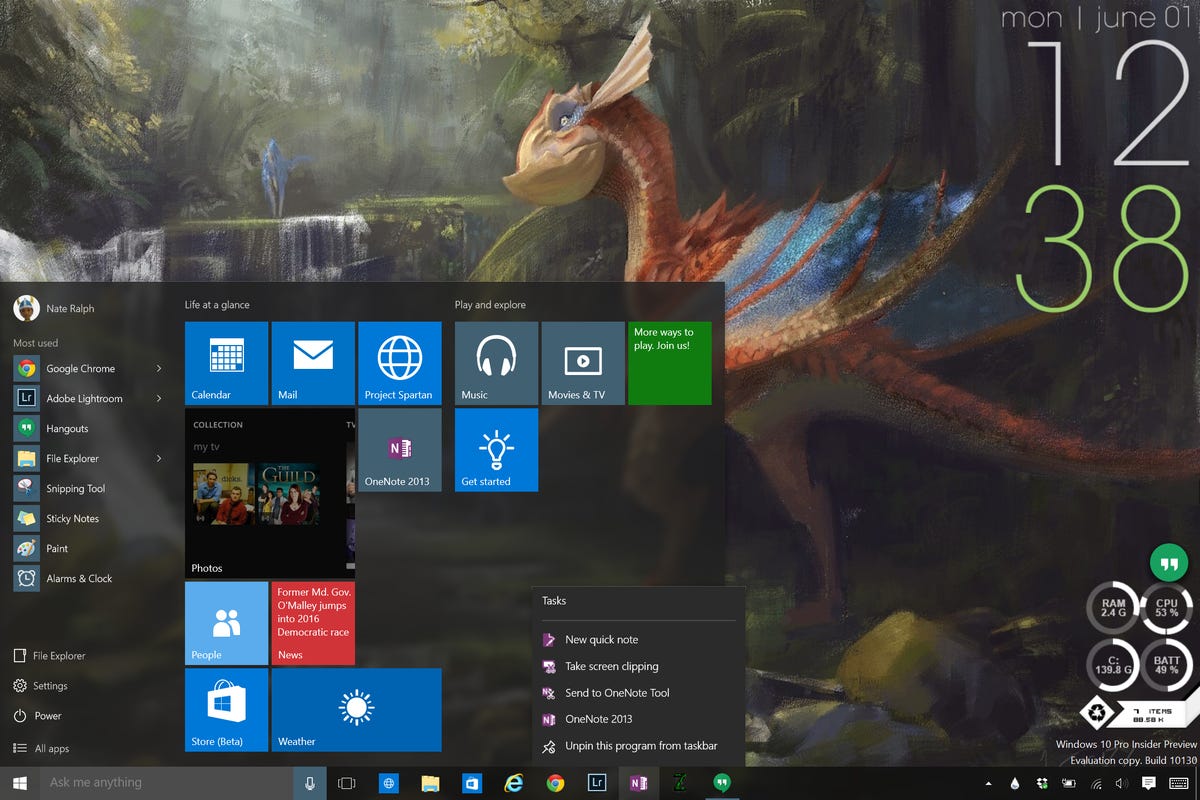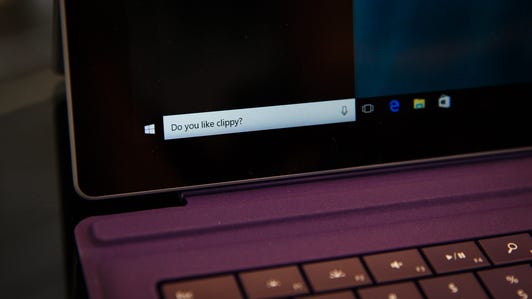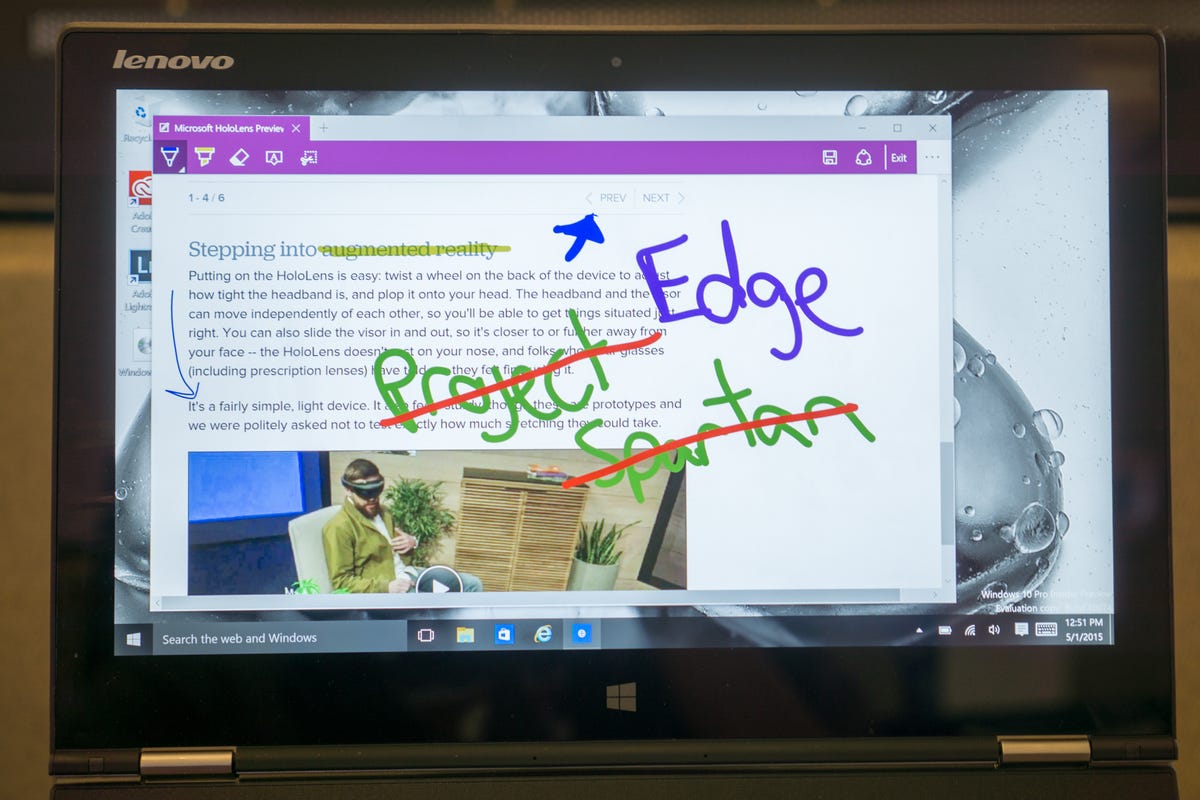

Now playing:
Watch this:
These are the Windows 10 features you need to know about
1:23
Windows 10 has arrived. I’ve spent the last nine months running the Windows Technical Preview on desktops, laptops and tablets, watching it evolve from interesting concept to my primary operating system.
If you’re new to the party and have questions, I’ve got some answers on the latest step for Windows.
Windows 10
- See all of CNET’s Windows 10 coverage
- CNET’s one-stop shop for Windows 10 guides
- Windows 10 finally has a release date
- Which edition of Windows 10 will you get for free?
- When Windows 10 arrives, will your files and apps survive?
1. When can I upgrade? And how much will it cost?
Windows 10 launches tonight, July 28 at 9 p.m. PT. It’ll be free for one year, for anyone running Windows 7 and Windows 8.1. If you’re running an earlier version of Windows or don’t upgrade by that time, you’ll be able to pick up Windows 10 Home for $119, and Windows 10 Pro for $199.
If you’ve reserved your free copy of Windows 10, you’ll get a notification when Windows 10 is ready to be installed, and have the option to schedule your installation for the most appropriate time for you.
2. I’ve got a desktop, a tablet, and am considering a Windows Phone. How will that work?
Microsoft’s ultimate goal is to make Windows 10 the sole operating system powering all of your devices, and Continuum is the driving force behind that. Windows 10 knows when you’re interacting with a keyboard and mouse or using a touchscreen and will react accordingly. If you’re using a keyboard and mouse, you’ll be treated to the standard Windows experience. If you’re on a tablet, you’ll encounter fullscreen apps and a finger-friendly Start menu. Pop off the keyboard on a two-in-one device like the Surface Pro 3 , and the interface will smoothly transform into tablet mode — if you want it to, of course.
8 Windows 10 settings you should change right away






The situation on phones is a little different, as there will be a Windows 10 Mobile . But Microsoft has also shown Windows Phones that transform into PCs once a mouse and keyboard are connected — there’s no word on when we’ll see that capability on Windows Phones.

Nate Ralph/CNET
3. What about apps?
Microsoft wants you to be able to buy an app from the Windows Store once, and expect it to run on all of your devices. These universal apps will then adopt whatever form is appropriate for the device you’re using, whether you’re on a tablet or a PC. We’ve already seen a taste of this with Microsoft’s Office suite, which is the full Office experience in a format that’s appropriate for your device. I wouldn’t recommend editing spreadsheets on your smartphone, but it works, and you’ll have all of Excel (and PowerPoint, and Word, and the rest) at your disposal.
4. Those full-screen ‘Modern’ apps were a pain. What ever happened to them?
Those touch-friendly, full-screen apps that debuted with Windows 8 were alternately known as the “Metro” or “Modern” design. With Windows 10, full-screen apps are optional. Let’s say you’re using a convertible 2-in-1 device, like the Surface Pro 3 . Thanks to Continuum, when the keyboard is docked you’ll see the standard desktop with Windows 10’s “new” old-school Start menu. Once you take the device off of the keyboard base, the OS allows you to switch to the finger-friendly tablet mode Windows 8 users are likely familiar with.
5. I actually liked those Modern apps, and bought a few. What happens now?
Existing Modern apps take advantage of Windows 10’s Continuum automatically, so you’ll have little to worry about there. When you’re in tablet mode they’ll behave like they always have. If you’re in desktop mode, they’ll convert into a normal windowed app that you can drag around at your leisure.


Screenshot by Nate Ralph/CNET
6. And the Start menu?
If you hated Windows 8’s full-screen Start screen, you’re in luck: the new Start menu harkens back to the good old days, sitting on the left side of the screen and presenting that familiar pop-up column of shortcuts. And if you liked Windows 8’s approach, there’s something here for you, too: the new menu will incorporate Live Tiles and can be customized.
Continuum means you get the best of both worlds, as you can jump between tablet and desktop modes on the fly. And if you never want to see that full screen start menu again, there’s an option for that too.
7. Never mind the apps — I need to get things done. Any improvements on that front?
Windows 10 beefs up Snap, the function that lets you quickly arrange apps side by side, with a new quadrant layout that lets you split your display up among up to four apps. There’s also support for multiple virtual desktops (finally), so you can keep all your work apps in one place and quickly slide back to the desktop with your blogs and Reddit once your boss walks away. And then there’s the task view button that lives on the taskbar. Click it, and you’ll get a quick look at all of your open files, windows, and desktops.
Unwrap Cortana’s Easter eggs






Microsoft’s Cortana virtual assistant has also made the jump from phone to desktop . Say “Hey, Cortana” after turning on the voice recognition feature and you can bark commands at your PC, whether you’re searching for directions or checking the weather. Cortana is also able to send emails that you dictate to your contacts.


Nate Ralph/CNET
8. Is Internet Explorer still around?
Yes and no. Internet Explorer remains a part of Windows for compatibility reasons, but it’s been replaced by a brand-new browser, called Microsoft Edge . The browser will offer all of the amenities we’ve come to expect from modern browsers, including support for extensions, a reading mode that strips websites down to their bare essentials, and a new rendering engine that’s appreciably zippy while you’re browsing the Web.
And there are a few new tricks baked in, too. Microsoft’s Virtual Assistant Cortana will drop suggestions into the address bar as you search, and gather important details on business and restaurant websites into a sidebar. Click the Web Note button, and you’ll be able to annotate what you’re looking at and share your notes via email, or through OneNote.
9. Will Windows 10 run on my machine?
If your PC is only a few years old and you’re already running Windows 7 or Windows 8.1, you should be fine. The minimum requirements for Windows 10 are a 1GHz processor, at least 1GB of RAM, and 16GB of hard drive space.
Some older peripherals like USB floppy drives will run into trouble while you’re upgrading. Some software might not make the cut, including some apps that were pre-installed by your PC’s manufacturer. There are also two versions of Windows 10 — Windows 10 Home and Pro — and the version you get will vary, depending on the version of Windows 7 or 8 you’re running now. Microsoft’s Windows 10 Specifications site has the full details, so you can ensure that your PC or tablet makes the transition intact.




